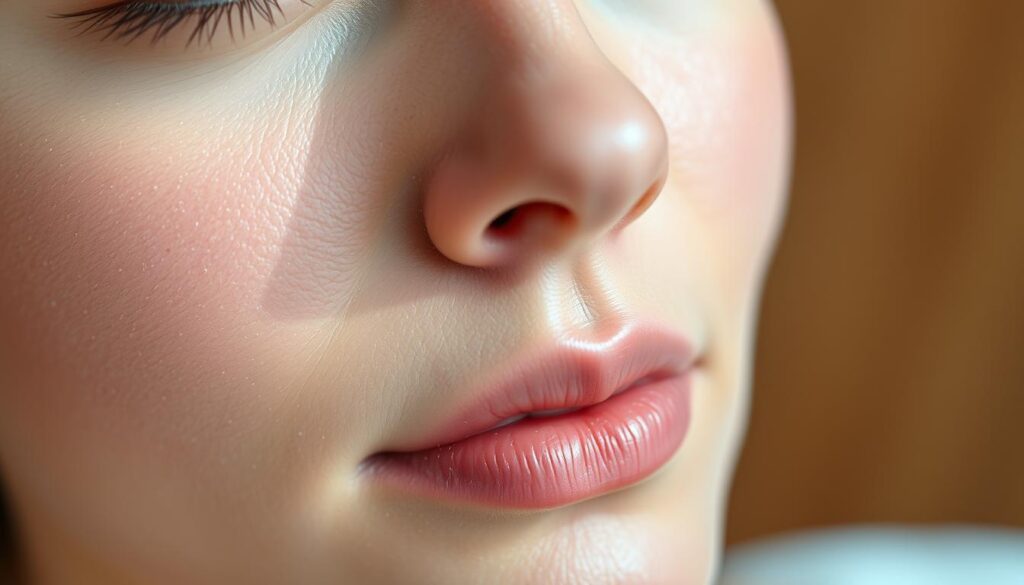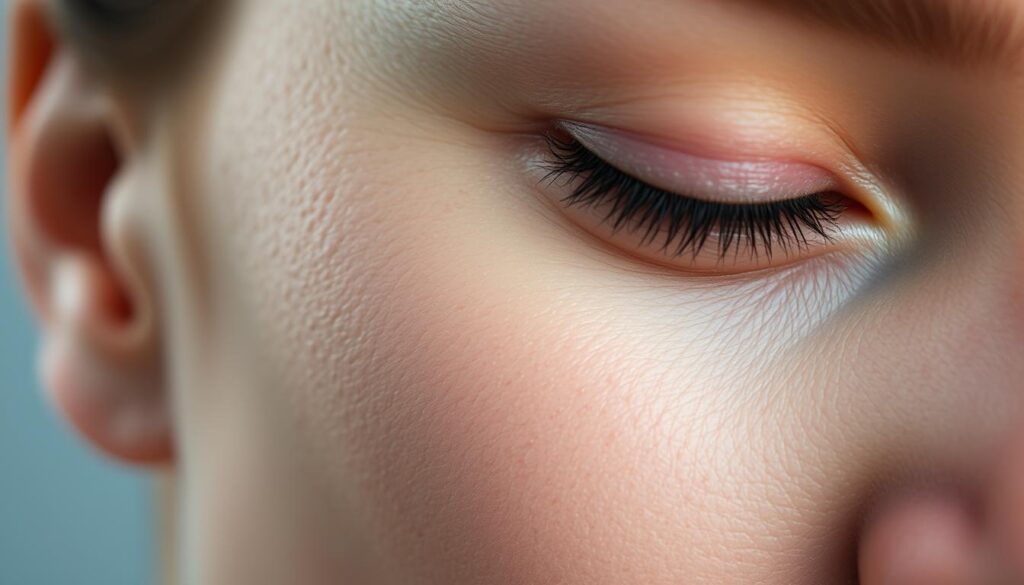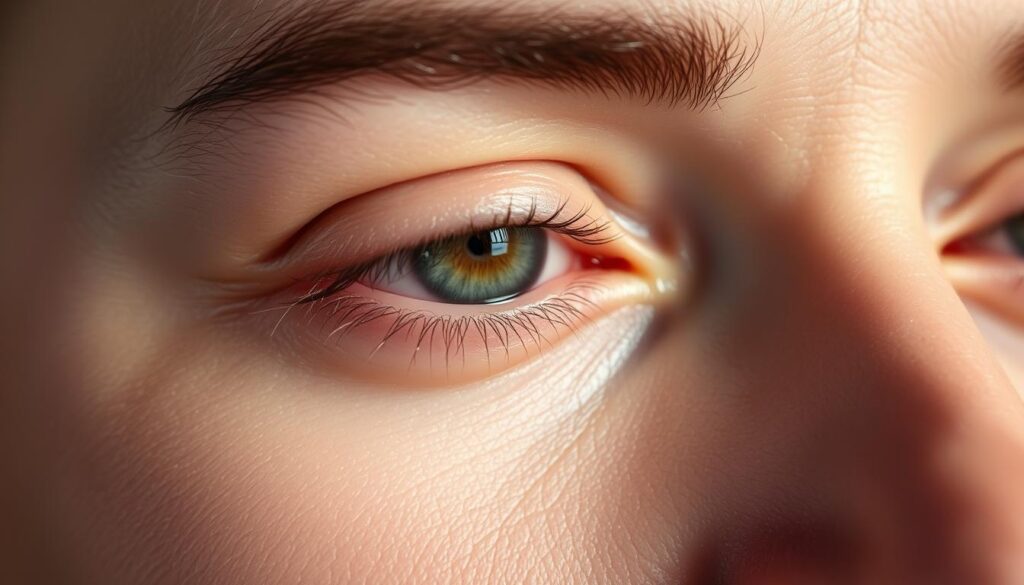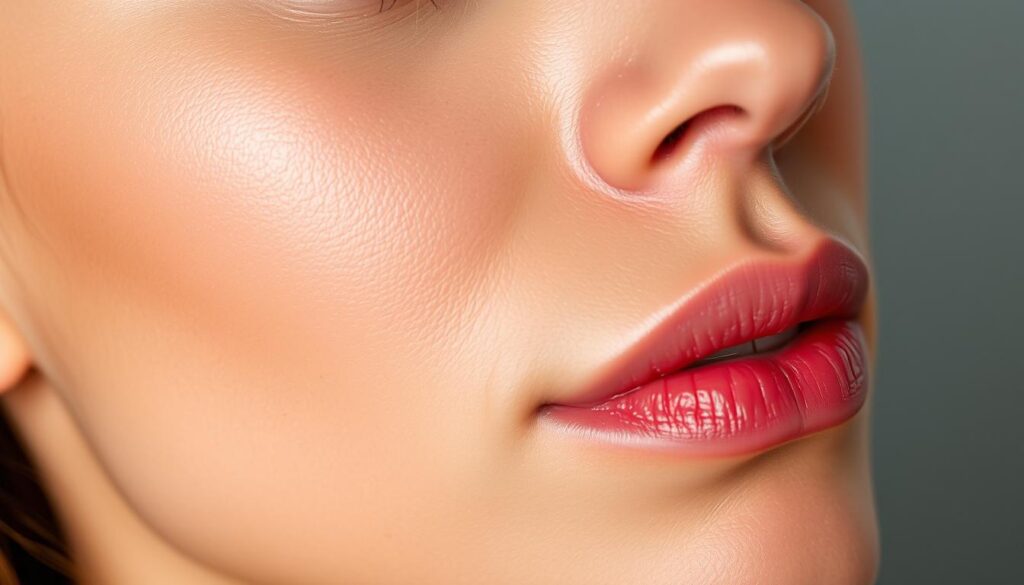If you’ve ever noticed small bumps on your skin, you’re not alone. These blemishes, often caused by clogged pores, are a common concern for many. They form when excess oil, dead skin cells, and bacteria accumulate in your pores, leading to either open or closed comedones1.
Understanding the root cause is the first step toward effective treatment. For instance, salicylic acid is a key ingredient that helps break down the substances clogging your pores1. Over-the-counter products containing this ingredient can be a great starting point for your skincare routine.
It’s also important to avoid picking or popping these blemishes, as this can lead to irritation and scarring. Instead, focus on using non-comedogenic products that won’t clog your pores further. If you’re unsure where to start, consulting a dermatologist can provide personalized advice tailored to your skin type2.
This guide will walk you through everything you need to know, from over-the-counter treatments to preventive measures. Let’s dive in and help you achieve clearer, healthier skin!
Introduction to Blackheads and Whiteheads
Dealing with clogged pores? You’re not alone—these blemishes affect nearly everyone. Known as open and closed comedones, they form when excess oil and dead skin cells mix, blocking your hair follicles3. This process is universal, making it a top skincare concern for people of all ages.
These blemishes often appear on areas with more oil glands, like your face, back, and shoulders3. Hormonal changes and stress can worsen the issue, leading to more frequent breakouts4. Understanding these factors is the first step toward managing them effectively.
What Makes Them So Common?
Nearly everyone experiences these blemishes at some point in their lives5. They’re classified as non-inflammatory acne, meaning they don’t cause swelling or redness unless irritated4. The primary cause is the buildup of sebum and dead skin cells, which clog your pores3.
Improper handling, like picking or popping, can make things worse. It can lead to scarring or even introduce bacteria, causing inflammation3. That’s why it’s crucial to approach treatment with care and patience.
Understanding How They Impact Your Skin
These blemishes can affect your skin’s appearance and texture. They often leave behind uneven tones or rough patches, especially if not treated properly5. Regular cleansing and using the right products, like those with salicylic acid, can help keep your pores clear3.
Remember, managing these issues is a journey. With the right approach, you can achieve clearer, healthier skin. Later sections will dive deeper into causes and effective treatments to help you get started.
What Are Blackheads and Whiteheads?
Clogged pores can lead to two distinct types of blemishes: open and closed comedones. These are both forms of acne caused by the buildup of sebum, dead skin cells, and bacteria in your pores6. Understanding their differences is crucial for effective treatment.
Differences Between Open and Closed Comedones
Open comedones, often called blackheads, occur when a pore is clogged but remains open. Exposure to air oxidizes the sebum, giving it a dark appearance6. Closed comedones, or whiteheads, form when the pore is completely blocked, trapping the oil and dead skin cells beneath the surface, resulting in a white or flesh-colored bump6.
These differences are not just visual. Open comedones are easier to treat with over-the-counter products, while closed comedones may require more targeted approaches7.
Visual Cues and Common Locations
Blackheads are most commonly found on the nose, chin, and forehead, areas with higher oil production6. Whiteheads, on the other hand, often appear on the face, neck, and back, where pores are more prone to complete blockage7.
Recognizing these signs helps you choose the right skincare products. For example, salicylic acid cleansers are effective for both types, as they penetrate the pore to dissolve the clogging substances6.
| Type | Appearance | Common Locations | Treatment Approach |
|---|---|---|---|
| Blackheads | Dark, oxidized | Nose, chin, forehead | Salicylic acid, exfoliation |
| Whiteheads | White or flesh-colored | Face, neck, back | Targeted creams, retinoids |
Understanding these differences is the first step toward clearer skin. In the next sections, we’ll explore how to manage these blemishes effectively with the right products and routines.
Common Causes of Pore Congestion
Your skin’s health often depends on how well your pores function. When these tiny openings get clogged, it can lead to a variety of skin concerns. Understanding the root causes is key to finding the right solutions.
Excess Oil and Dead Skin Cell Buildup
Your skin naturally produces sebum, an oily substance that helps keep it hydrated. However, when combined with dead skin cells, it can block your pores8. This buildup is the primary cause of congestion, leading to issues like whiteheads and blackheads9.
Excess oil production can also make your pores appear larger, making them more prone to clogging8. Regular cleansing and exfoliation can help remove this buildup and keep your pores clear.
Hormonal Shifts and Bacterial Factors
Hormonal changes, especially during puberty or stress, can increase sebum production8. This excess oil creates an ideal environment for bacteria like Propionibacterium acnes to thrive, leading to inflammation and breakouts9.
Stress and lack of sleep can also worsen these issues, making it harder for your skin to stay balanced9. Managing stress through techniques like meditation or yoga can help reduce its impact on your skin.
Both internal and external factors play a role in pore congestion. By understanding these causes, you can take steps to keep your skin healthy and clear. The next section will explore effective treatments to address these concerns.
Over-the-Counter Treatments and Effective Ingredients
Effective skincare relies on using proven ingredients. Over-the-counter products are a great starting point for managing blemishes. They often contain active ingredients like salicylic acid, benzoyl peroxide, and retinoids, which target clogged pores and reduce breakouts10.
https://www.youtube.com/watch?v=ys_R4KZYj24
Salicylic Acid, Benzoyl Peroxide, and Their Benefits
Salicylic acid works by exfoliating dead skin cells and unclogging pores. It’s available in strengths from 0.5% to 2%, making it suitable for daily use10. Products like CeraVe Acne Control Cleanser incorporate this ingredient to gently clear your skin.
Benzoyl peroxide is another powerful option. It kills bacteria and reduces inflammation, making it ideal for acne-prone skin. Studies show that lower strengths (2.5%) are as effective as higher concentrations, with fewer side effects10.
Using Retinoids and Targeted Creams
Retinoids, like adapalene gel, help unclog pores and promote new skin cell growth. Over-the-counter options like Differin are available at 0.1% strength and are effective for mild acne10. For stubborn blemishes, targeted creams can be applied directly to problem areas.
Combining these ingredients into a simple routine can yield significant results. For example, using a salicylic acid cleanser followed by a retinoid cream can address multiple concerns at once11.
| Ingredient | Benefits | Example Products |
|---|---|---|
| Salicylic Acid | Exfoliates, unclogs pores | CeraVe Acne Control Cleanser |
| Benzoyl Peroxide | Kills bacteria, reduces inflammation | PanOxyl Acne Foaming Wash |
| Retinoids | Promotes cell turnover | Differin Gel |
Remember, consistency is key. It may take 2 to 3 months of daily use to see significant improvements10. Stick with your routine, and your skin will thank you.
Home Remedies for Managing Acne
Managing acne at home can be simple with the right natural remedies. Many ingredients found in your kitchen or local store can help reduce inflammation and promote healing. These solutions are gentle on your skin and can be a great addition to your routine.
Natural Astringents and Anti-Inflammatory Options
Witch hazel is a natural astringent that helps tighten pores and reduce oiliness. Studies show it can significantly improve acne after consistent use12. Tea tree oil is another powerful option, known for its antibacterial properties. It’s been found to reduce acne with less irritation compared to benzoyl peroxide12.
Raw honey is a soothing ingredient that can calm irritated skin. Its antibacterial properties help fight acne-causing bacteria13. Aloe vera is also effective, especially when combined with other treatments. It reduces redness and promotes healing12.
Proper Cleansing Techniques to Avoid Irritation
Cleansing your face properly is crucial for managing acne. Use lukewarm water and a gentle cleanser to avoid stripping your skin of its natural oils. Harsh scrubbing can irritate your skin and worsen breakouts14.
Before attempting any extraction, apply a warm compress to open your pores. Always use clean hands or tools to prevent introducing bacteria. Over-the-counter products with salicylic acid can also help keep your pores clear14.
While home remedies can be effective, persistent acne may require professional help. If your condition doesn’t improve, consult a dermatologist for personalized advice14.
Blackheads and Whiteheads: Causes and Best Removal Methods
Achieving clear skin starts with knowing what causes those stubborn bumps. Blemishes like these often form when excess oil, dead skin cells, and bacteria clog your pores15. Understanding these factors is the first step toward effective treatment.

Proper cleansing is essential to prevent pore congestion. Use a gentle cleanser to remove dirt and oil without irritating your skin. Over-the-counter products with salicylic acid are highly effective in breaking down clogs and keeping pores clear15.
For more stubborn cases, retinoids can help unclog pores and promote cell turnover. These ingredients are available in both OTC and prescription strengths, making them versatile for different skin types16. Consistency is key—results may take 2 to 3 months of regular use.
Home remedies also play a role in managing blemishes. Natural options like tea tree oil and aloe vera can reduce inflammation and soothe irritated skin16. However, for persistent issues, consulting a dermatologist is recommended to explore advanced treatments.
| Treatment Type | Key Ingredient | Benefits |
|---|---|---|
| OTC Products | Salicylic Acid | Unclogs pores, reduces oil |
| Retinoids | Adapalene | Promotes cell turnover |
| Home Remedies | Tea Tree Oil | Reduces inflammation |
By understanding the causes and choosing the right treatments, you can achieve clearer, healthier skin. Stick to a routine that works for you, and don’t hesitate to seek professional advice when needed.
Prevention and Daily Skincare Routines
Keeping your skin clear requires more than just occasional care. A consistent routine with the right products can help prevent future breakouts and maintain long-term health. Start by choosing non-comedogenic items that won’t clog your pores, ensuring your skin stays balanced17.
Building a Routine with Non-Comedogenic Products
Non-comedogenic products are designed to let your skin breathe. Look for labels that specify this feature, especially in cleansers, moisturizers, and sunscreens. These items reduce the risk of clogged pores, which can lead to blemishes17.
Incorporate a gentle cleanser into your daily routine to remove dirt and excess oil. Follow up with a lightweight moisturizer to keep your skin hydrated. Don’t forget sunscreen—it protects against UV damage, which can worsen acne scars17.
Maintenance Tips for Long-Term Skin Health
Consistency is key to maintaining clear skin. Exfoliate 1-2 times a week to remove dead skin cells, but avoid overdoing it to prevent irritation. Use products with salicylic acid or retinoids to keep pores clear and reduce breakouts17.
Monitor your skin’s response to your routine. If you notice dryness or irritation, adjust your products accordingly. Long-term health is built on small, daily habits that keep your skin balanced and clear18.
When to Seek Professional Help
Sometimes, your skin needs more than just at-home care to stay clear. If you’ve tried over-the-counter products and home remedies without success, it might be time to consult a dermatologist. Persistent or severe breakouts could indicate underlying issues that require expert attention19.
Recognizing Signs That Need a Dermatologist
Certain signs suggest it’s time to see a professional. Excessive inflammation, scarring, or sudden changes in your skin are red flags. If your breakouts are painful or spreading, a dermatologist can help identify the root cause20.
Another sign is when over-the-counter treatments fail to improve your condition after several weeks. This could mean your acne requires stronger, prescription-based solutions19.
Discussing Prescription Options and Advanced Treatments
During a consultation, your dermatologist may recommend prescription treatments tailored to your needs. Options include topical retinoids, which promote cell turnover and prevent clogged pores. These can show visible improvement in 4 to 6 weeks with consistent use19.
For more severe cases, oral antibiotics or hormonal treatments might be prescribed. These options target bacteria and regulate oil production, helping to clear persistent breakouts20.
Don’t hesitate to seek professional guidance. Expert advice can prevent worsening of your acne and ensure long-term skin health. A thorough assessment will help customize the best treatment plan for you21.
Conclusion
Clear skin is achievable with the right knowledge and consistent care. Understanding the causes of blemishes is your first step toward a healthier complexion. Treatments like over-the-counter products and home remedies can help manage these concerns effectively22.
A consistent skincare routine is essential. Use gentle cleansers and non-comedogenic products to prevent clogged pores. Avoid harmful practices like picking or popping, which can lead to irritation and scarring23.
For persistent issues, consulting a dermatologist is a smart move. They can provide tailored solutions, such as prescription treatments, to address your specific needs24.
Start your journey to clearer skin today. By adopting these tips, you can maintain long-term skin health and confidence. Your skin deserves the best care—take the first step now!



